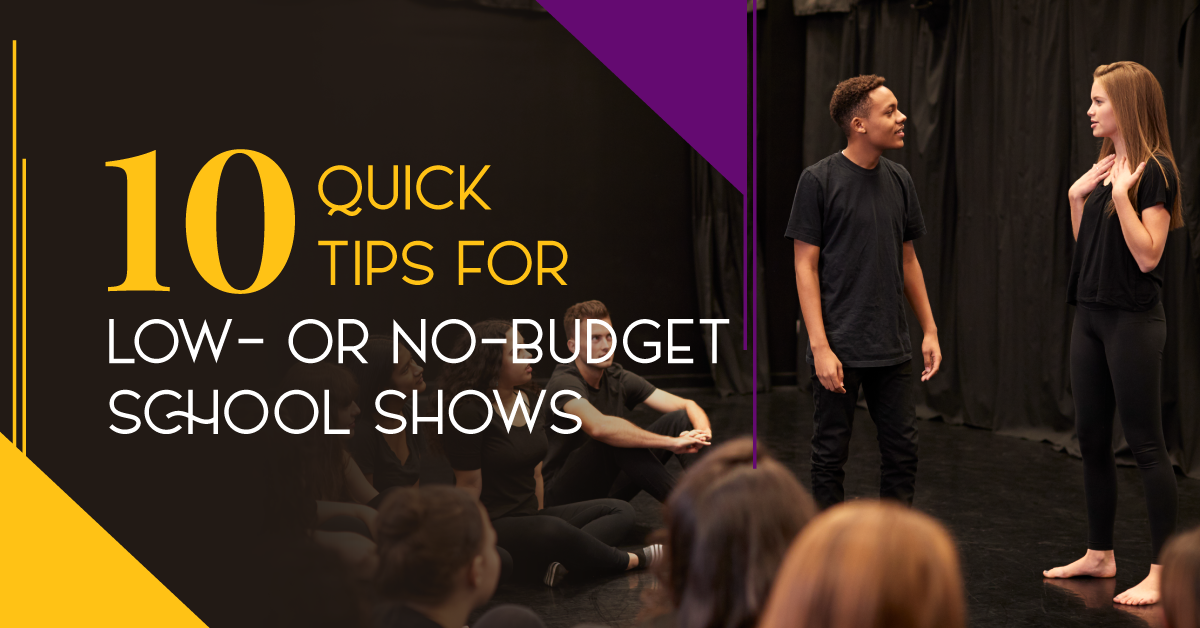10 Quick Tips for Low- or No-Budget School Shows
When you’re expected to produce a show with a shoestring (or less) budget, you have to make smart choices about everything to make your money stretch as much as possible. But don’t despair! It’s absolutely possible to stage an incredible school show on a low or zero budget. Read on for 10 quick and practical tips to get your show on its feet without breaking the bank.
1. Start by figuring out your budget so you know how much you have to work with. Then, start fundraising as early as possible.
2. Choose a straight play to produce, rather than a musical. Musicals are more expensive in general, as the performance rights cost more (since you’re buying both scripts and scores), they require additional staff (musical director and choreographer, at minimum), and you’ll need either a set of performance tracks or a live band, both of which cost even more money.
3. Choose a play with a small cast. Larger casts mean more of everything: more copies of the scripts, more costumes, more makeup and hair supplies, more more more. Of course, we would love to do huge cast shows with lots of students involved. But when you have a tight budget, you should start small.
4. If you can’t afford to purchase the rights to an existing play, write your own original play or produce a student-written play. If you don’t have the ability or time to write a full-length play, you could present a showcase of student-written monologues or have students write a series of scenes about a single topic and present them vignette-style.
5. For your set, focus on one signature piece or try using a curtain as a backdrop. Don’t worry about what the sets looked like in another production; come up with your own, simple yet unique set concept.
6. Forgo extensive costumes and have all your students wear rehearsal blacks (but they needn’t be boring). Choose multi-purpose accessories. Have students build costumes out of found materials. Or, choose a title where the students are playing students and can simply wear costumes from their own closets.
7. Go through your props list and determine the items that are absolutely essential, and cut the rest. Repurpose items you already have in your stocks. Borrow prop items from families, other classes, other schools, or local community theatre companies before purchasing items.
8. Work with your students on projecting their voices and maintaining good vocal hygiene so you don’t have to purchase or rent microphones.
9. Use found resources to create lighting, sound, and special effects. Go even simpler and use acting and performance techniques instead of special effects. Or, challenge your students to come up with low-tech and low-budget ways of creating special effects themselves.
10. Ask for help. Reach out to parent volunteers, other teachers at your school, local community theatres, and online resources for advice, extra hands to help, and requests to borrow items. Take advantage of free resources, such as Theatrefolk’s Production Design on a Budget Toolkit as well.



